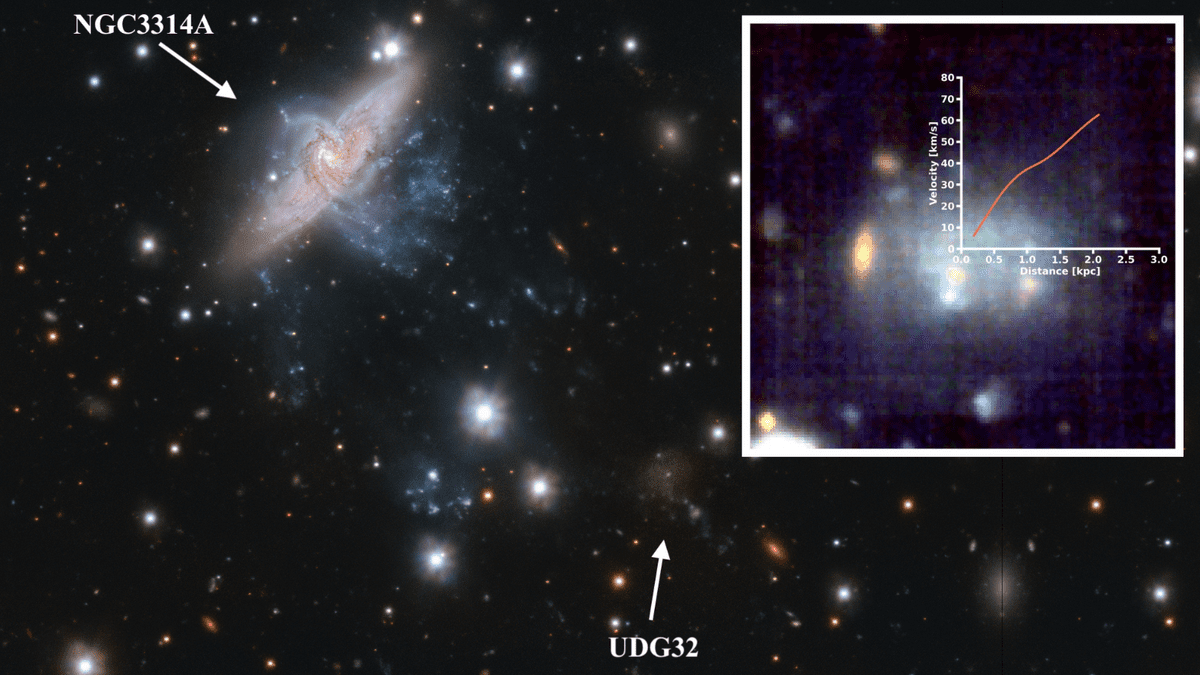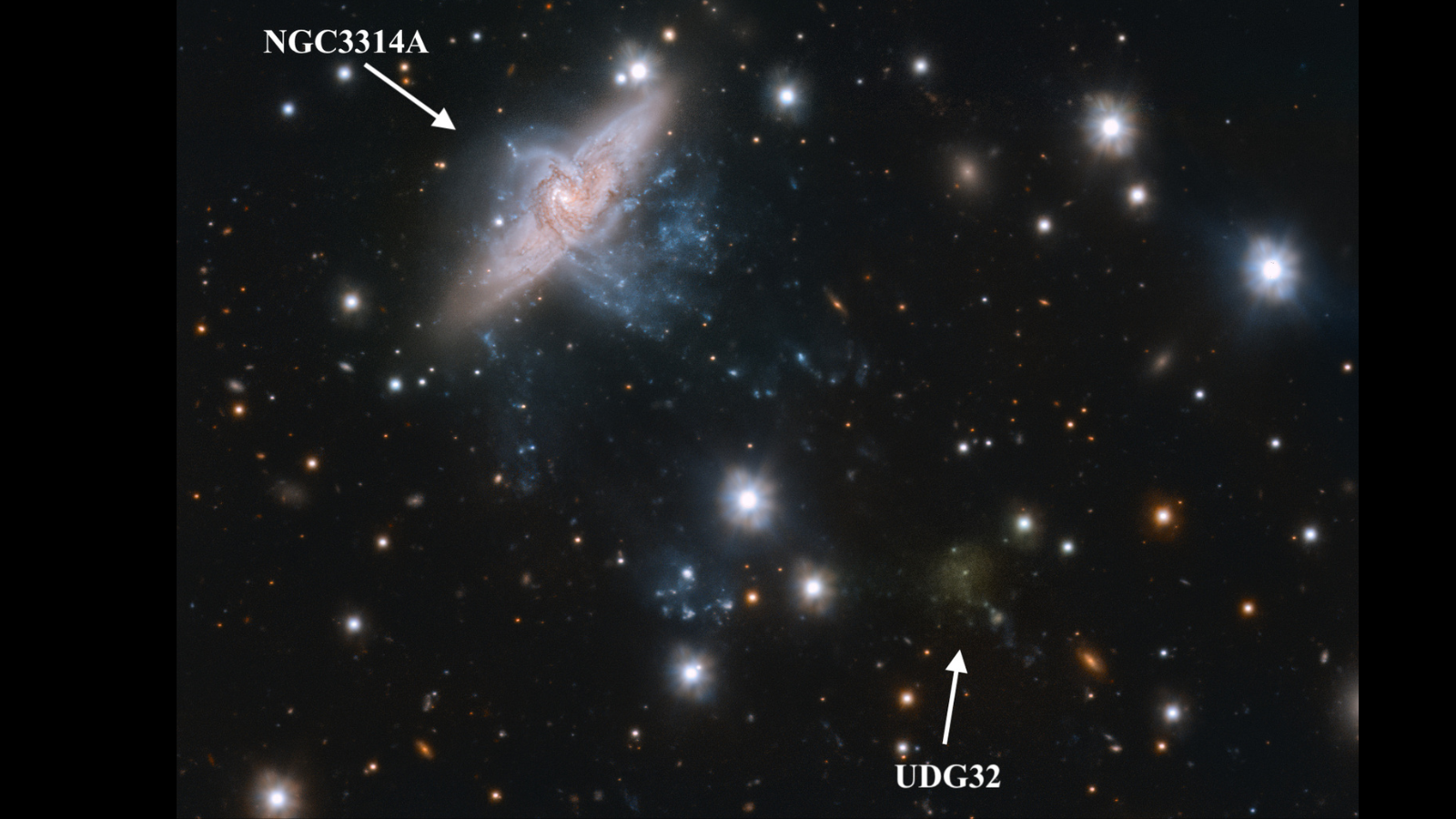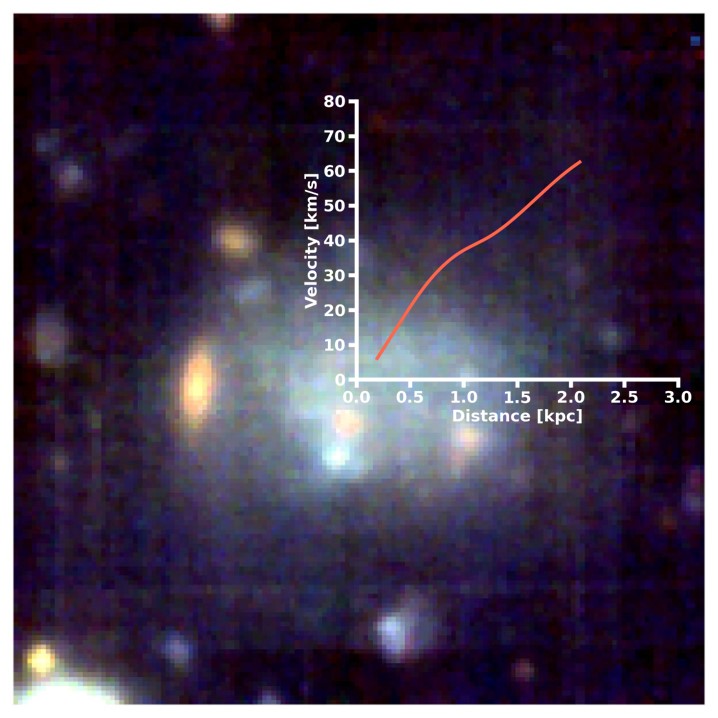
Astronomers have made an intriguing discovery concerning the universe’s smallest and faintest galaxy type, known as Ultra-Diffuse Galaxies (UDGs).
A research team investigating these elusive galaxies has found that nearly half of the UDGs analyzed exhibit motions that contradict earlier theories regarding their formation and evolution. Specifically, the team observed an unanticipated rotational movement of stars within several of these dwarf galaxies.
The researchers obtained these insights while examining stellar motion in 30 UDGs situated in the Hydra galaxy cluster, which is located over 160 million light-years from Earth. These findings may significantly alter our understanding of how UDGs develop and change over time.
“The results we achieved were particularly rewarding,” stated Chiara Buttitta, a researcher from the National Institute for Astrophysics and co-author of a related paper. “Not only were we able to determine the stellar motions within these extraordinarily faint galaxies, but we also discovered something unexpected.”
The investigative team employed the “Looking into the faintest With MUSE” (LEWIS) observational program, which utilizes the MUSE integral field spectrograph located on the Very Large Telescope (VLT) in Chile—known as the most advanced facility for visible-light astronomy worldwide.
The Origins of Ultra-Diffuse Galaxies
Ultra-Diffuse Galaxies were first identified in 2015, and their unusual formation and evolution have posed complex challenges for astronomers.
The findings from the LEWIS project enabled the research team to conclude that UDGs inhabit environments with significant variations in physical properties, the abundance of dark matter, and the characteristics of their stars, including their motions and compositions.
In particular, the scientists conducted an in-depth analysis of “UDG32,” a dwarf galaxy located at the end of a gas filament connected to the spiral galaxy “NGC 3314A.”

One prevailing theory about UDG formation posits that they arise when gas filaments from larger galaxies are drawn in by gravitational influences.
If gas clouds remain within these filaments, they may become too dense and collapse, therefore giving rise to stars that subsequently form the basis of a UDG.
The data gathered from the LEWIS project confirmed that UDG32’s connection to the filament tail of NGC3314A is not merely coincidental. There are underlying factors making UDG32 appear to be located at the end of NGC3314A’s tidal tail.

Moreover, UDG32 contains a higher concentration of elements heavier than hydrogen and helium—commonly referred to as “metals”—compared to other UDGs in the Hydra cluster.
These metals are created through nuclear fusion processes within stars and are dispersed into the universe when these stars reach the end of their life cycles, becoming the building blocks for future generations of stars.
This is particularly noteworthy because, although the stars in UDG32 are younger than those in other UDGs within the Hydra cluster, they contain a greater abundance of metals. This indicates that they formed from gas and dust enriched by older stars from nearby, suggesting that this UDG likely originated from its neighboring spiral galaxy.
The discoveries made by the research team serve as strong validation for the LEWIS initiative, which has effectively doubled the number of UDGs analyzed through spectroscopy. Furthermore, LEWIS has provided the first comprehensive overview of these faint galaxies within a still-forming galaxy cluster.
“The LEWIS project posed significant challenges. Upon its acceptance by ESO, we realized it would yield a trove of data for exploration, and it has indeed delivered,” remarked Enrichetta Iodice, the scientific director of LEWIS.
“The true strength of LEWIS lies in its integral spectroscopy capabilities, which allow us to simultaneously examine each galaxy’s stellar motion as well as its average stellar population,” Iodice explained, “enabling us to gain insight into the formation age and characteristics of globular clusters, crucial indicators of dark matter presence.
By piecing together these individual findings like a puzzle, we can reconstruct the formation history of these systems.”
The research team’s work has been detailed in two publications featured in the journal Astronomy & Astrophysics.









